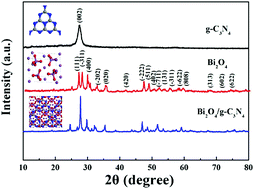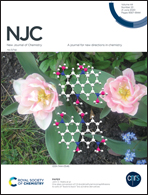Construction of a rod-like Bi2O4 modified porous g-C3N4 nanosheets heterojunction photocatalyst for the degradation of tetracycline
Abstract
The solar-powered semiconductor photocatalytic technology for pollutant degradation has been widely studied for its potential to alleviate the current environmental crisis. Here, a novel Bi2O4/g-C3N4 heterojunction photocatalyst was successfully synthesized via integrating high-temperature calcination with a hydrothermal method. The as-prepared Bi2O4/g-C3N4 showed a superior degradation efficiency of about 95% for degrading tetracycline (TC), much higher than that of pure g-C3N4. The enhanced degradation performance derived from the porous structure of g-C3N4 can provide a larger specific surface area and more abundant reaction sites. Moreover, the heterojunction structure between Bi2O4 and g-C3N4 can improve the separation efficiency of electron–hole pairs. Furthermore, the morphology, crystalline property, physicochemical properties and surface area of Bi2O4/g-C3N4 were investigated via a series of characterizations. The mechanism of photocatalytic degradation is discussed by capture experiments and ESR detection. This study describes the synthesis of a heterojunction system for improving the photocatalytic performance of g-C3N4.



 Please wait while we load your content...
Please wait while we load your content...